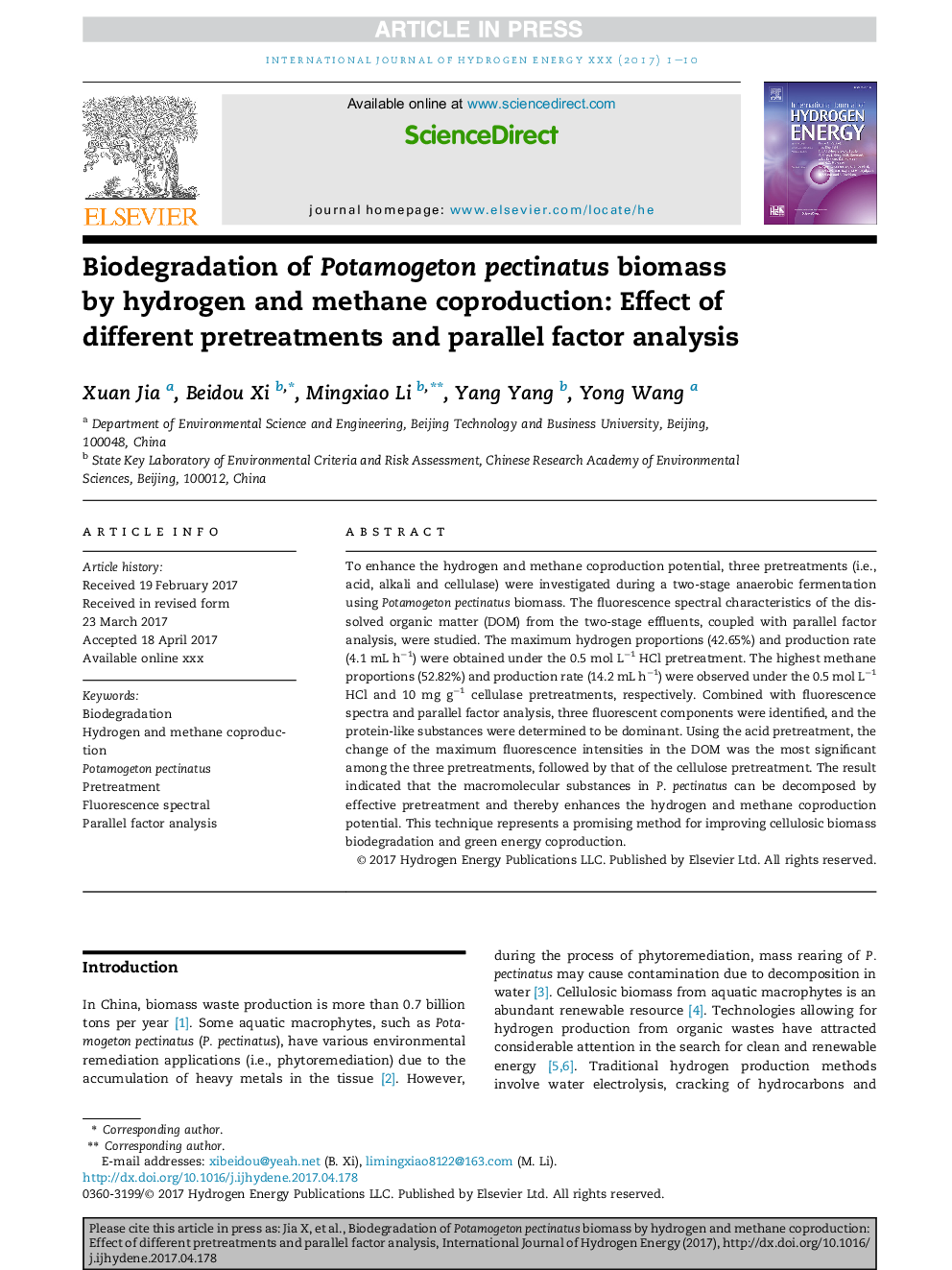| Article ID | Journal | Published Year | Pages | File Type |
|---|---|---|---|---|
| 5146193 | International Journal of Hydrogen Energy | 2017 | 10 Pages |
Abstract
To enhance the hydrogen and methane coproduction potential, three pretreatments (i.e., acid, alkali and cellulase) were investigated during a two-stage anaerobic fermentation using Potamogeton pectinatus biomass. The fluorescence spectral characteristics of the dissolved organic matter (DOM) from the two-stage effluents, coupled with parallel factor analysis, were studied. The maximum hydrogen proportions (42.65%) and production rate (4.1 mL hâ1) were obtained under the 0.5 mol Lâ1 HCl pretreatment. The highest methane proportions (52.82%) and production rate (14.2 mL hâ1) were observed under the 0.5 mol Lâ1 HCl and 10 mg gâ1 cellulase pretreatments, respectively. Combined with fluorescence spectra and parallel factor analysis, three fluorescent components were identified, and the protein-like substances were determined to be dominant. Using the acid pretreatment, the change of the maximum fluorescence intensities in the DOM was the most significant among the three pretreatments, followed by that of the cellulose pretreatment. The result indicated that the macromolecular substances in P. pectinatus can be decomposed by effective pretreatment and thereby enhances the hydrogen and methane coproduction potential. This technique represents a promising method for improving cellulosic biomass biodegradation and green energy coproduction.
Related Topics
Physical Sciences and Engineering
Chemistry
Electrochemistry
Authors
Xuan Jia, Beidou Xi, Mingxiao Li, Yang Yang, Yong Wang,
